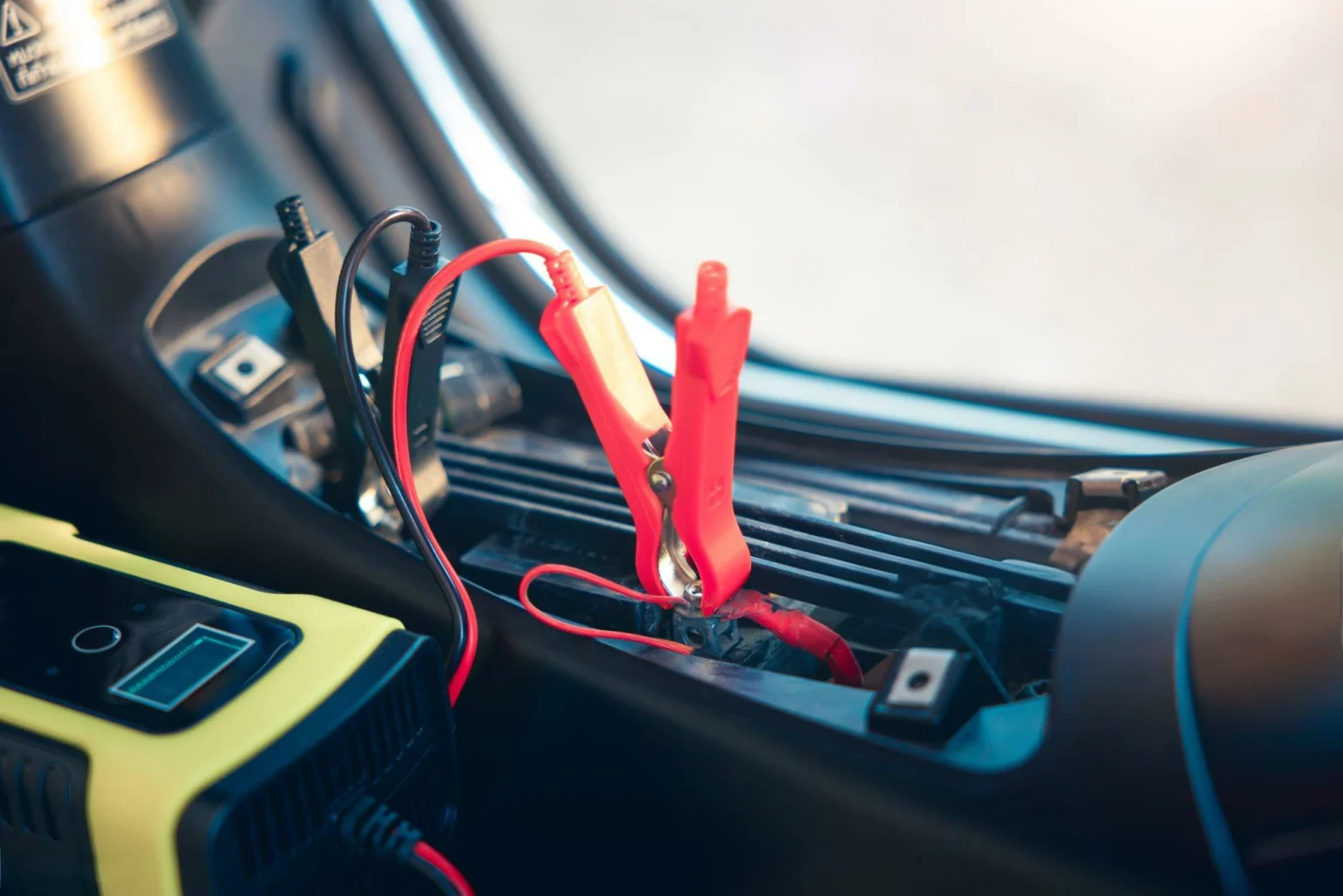How to Determine If Your Motorcycle Battery Needs Replacement

Rayne Zhou
Account Manager
Customer Service | Launching Battery Marketing Project Management | Regular Content Updates| Search Engine Optimization
As the core power source of a motorcycle’s electrical system, the battery directly affects riding safety and travel efficiency. By nature, a battery is a chemical energy storage device; as time passes, the activity of the internal chemical substances gradually diminishes, and eventually, it loses its ability to store electricity. Many motorcycle owners often confuse “a dead battery” with “a damaged battery” — the former is mostly caused by accidental power consumption (such as forgetting to turn off the headlight overnight, leading to gradual depletion of power that cannot be replenished in time by the alternator) and can usually be restored through jump-starting. The latter, however, results from internal structural damage to the battery, which makes it impossible to store electricity even after repeated charging. This is the primary cognitive prerequisite for determining whether a battery needs replacement.
Below, from three aspects — identifying fault signs, verifying with professional testing, and referring to the replacement cycle — we will detail how to accurately judge if a motorcycle battery needs replacement.

I. Be Alert to These Typical Fault Signs to Initially Assess Battery Condition
When a motorcycle battery is approaching the end of its service life, it will send out “early warning signals” through various intuitive phenomena, which owners can quickly identify through daily observation.
(1) Abnormal Starting and Power Supply
The starting condition of the engine is a “barometer” of battery performance. If the engine turns significantly slower during startup — for example, previously it only took 1-2 seconds to start by turning the ignition key, but now it requires repeated turning of the key 3-4 times with sluggish rotation, or it fails to turn at all — it is highly likely that the battery’s power storage capacity has decreased, making it unable to provide sufficient current to the starter motor. In addition, the vehicle’s electronic devices will also “reveal” battery issues: the headlight and instrument panel lights become dim, and may even flicker at idle speed. For instance, during night riding, the brightness of the lights fluctuates noticeably with the engine speed; the horn sound changes from clear to weak, and only emits a “hum” when pressed. These are all signs that the battery voltage is insufficient, preventing it from providing stable power to the electrical components.
(2) Physical Damage to the Battery Exterior
Visual inspection is the most convenient way for initial judgment. If the following physical abnormalities are found on the battery, high vigilance is required. First, casing deformation: the plastic casing of the battery has bulges, swellings, or cracks. For example, due to the accumulation of internal chemical gases in a lead-acid battery, the casing swells from a flat state to an “arc shape”. This situation not only indicates internal structural damage to the battery but also poses safety hazards such as fluid leakage and short circuits. Second, fluid leakage and discoloration: there is residual unknown fluid on the battery surface, or the color of the internal electrolyte changes from transparent or light yellow to dark brown. This suggests that the battery may have acid leakage or internal plate sulfation. Third, terminal corrosion: white, blue, or green powdery corrosion appears around the terminals. Although mild corrosion can be repaired through cleaning (such as wiping the terminals with a baking soda solution), if the corrosion is severe enough to cause terminal breakage or poor contact, or if corrosion occurs frequently even after cleaning, it is necessary to consider replacing the battery.
(3) Abnormal Power Storage and Usage Cycle
If the battery “loses power quickly after charging” — for example, immediately after being fully charged with a charger, it experiences difficulty starting again when attempted to start 1-2 days later — this indicates that the battery can no longer store electricity effectively, and the internal plates may be severely aged. In addition, “frequent need for jump-starting” is also an important signal. If jump-starting with another vehicle is required multiple times in a short period due to a dead battery, and after ruling out alternator faults (such as a loose alternator belt causing failure to charge normally), it can basically be determined that the battery has reached the end of its service life.
II. Use Professional Tools for Testing to Accurately Verify Battery Health
Reliance solely on intuitive observation may lead to misjudgment. Using professional tools for testing allows for a more accurate understanding of the battery’s actual condition. There are two common methods as follows.
(1) Multimeter Voltage Test
A multimeter is a basic tool for testing battery voltage, with simple operation steps and reliable results. First, set the multimeter to the “12-volt direct current (DC)” range and turn off the motorcycle engine to ensure the vehicle is in a power-off state. Then, connect the red probe to the positive (+) terminal of the battery and the black probe to the negative (-) terminal. Wait for a few seconds and read the value. A healthy motorcycle battery should have a voltage reading higher than 12.6 volts in a static state. If the reading is lower than 12.5 volts, it indicates insufficient battery power, and you can try charging it before testing again. If there is no significant increase in the reading after charging, or if the voltage drops below 11.5 volts the moment the engine is started (requiring an assistant to help start the engine while observing the change in the multimeter reading), this indicates that the internal power storage capacity of the battery has severely declined, and a new battery needs to be replaced. For example, when a certain owner conducted the test, the static voltage was only 12.1 volts, which increased to 12.3 volts after charging, but the voltage dropped sharply to 11.2 volts the moment the engine was started. This is a typical case of battery failure.
(2) Specialized Load Tester Detection
A load tester can simulate the actual working scenario of the battery and test its power storage capacity under load, making the results more reference-worthy. Load testers specifically designed for powersports batteries on the market usually use a color-coded system to display results (e.g., green for normal, yellow for needs observation, red for faulty). During testing, connect the positive and negative terminals of the tester to the corresponding terminals of the battery, respectively. After starting the tester, the device will apply a certain load to the battery, simulating the power consumption during engine startup and the operation of electronic devices. If the tester displays a red fault code or indicates “insufficient power storage capacity”, it means the battery cannot provide stable power in actual use. Even if it can temporarily start the vehicle, it may suddenly fail while riding, posing a safety risk. In such cases, the battery should be replaced in a timely manner.
III. Refer to the Battery Service Life Cycle and Determine the Replacement Timing Based on Actual Conditions
The service life of a motorcycle battery follows an objective pattern. Even if there are no obvious fault signs, it still needs to be replaced in a timely manner according to its usage time to avoid sudden failures. Generally speaking, the normal service life of a high-quality motorcycle battery is 3-4 years. If the vehicle is long-term exposed to humid, high-temperature, or low-temperature environments (such as parking outdoors in winter in northern regions, where the battery acid may freeze at low temperatures and cause the casing to expand and crack), or if it is frequently used for short-distance rides (where the engine does not run sufficiently, making the alternator unable to charge the battery fully), its service life may be shortened to 2-3 years.
If the owner cannot remember the purchase time of the battery, or if the battery has been used for more than 4 years, it is recommended to proactively replace it, even if there are no temporary issues such as difficulty starting or dim lights. For example, a certain owner’s motorcycle battery had been used for 5 years; although it started normally in daily use, during a long-distance ride, the vehicle suddenly shut down due to battery power failure, which not only disrupted the trip but also created a safety hazard on the highway section. In addition, if the battery has experienced severe physical damage such as acid leakage or casing swelling, it should be replaced immediately, regardless of its usage time, to prevent the acid from corroding the vehicle’s wiring or causing dangers such as short circuits and fires.
In conclusion, determining whether a motorcycle battery needs replacement requires a comprehensive judgment based on three aspects: “observation of fault signs + verification with professional testing + reference to the replacement cycle”. Timely replacement of a faulty battery not only ensures riding safety but also avoids damage to other components, such as the alternator and starter motor, due to battery issues, thereby reducing subsequent maintenance costs.
Subscribe for Real-Time Industry Updates
Stay ahead with real-time, ad-free industry insights delivered straight to your inbox!


Rayne Zhou
Account Manager
Customer Service | Launching Battery Marketing Project Management | Regular Content Updates| Search Engine Optimization
.webp)